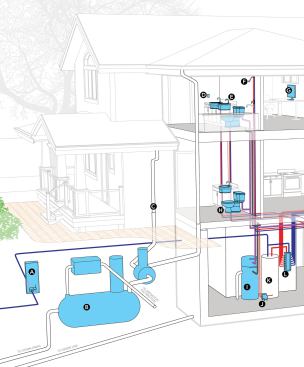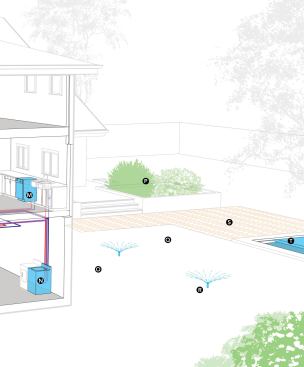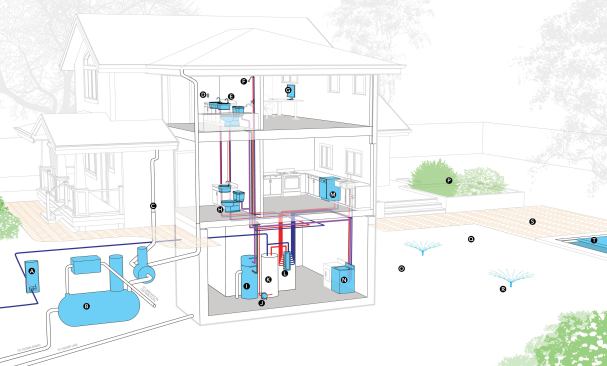A) WATER METER Subsurface with grade-level display; wireless wit…
That’s because water use at faucets and showers, even with flow restrictors that result in some measure of savings, is more a function of lag time—that dead zone spent waiting for hot water to reach the showerhead or lav faucet not calculated in a flow-rate-only comparison. Lessen lag time, and the water savings really kick in at those locations. (See “Go With the Flow,” page 23, for more on fixtures.)
#2 Water-Use Culprit (#1 indoors): Toilets

¦ Conventional Specs: Gravity-type, 3.4 gallons per flush (gpf) (26.7% of daily indoor use)
¦ Water-Saving Options:
1. 1.6 gpf (est. 56% use reduction to 8.2 gpcd; 18% of daily indoor use)
2. 1.28 gpf (est. 65% use reduction to 6.56 gpcd; current IGCC and EPA WaterSense standard)
3. 0.8/1.6 gpf dual-flush (est. 71% use reduction to 5.37 gpcd)
4. Greywater (no municipal water required)
¦ Codes and Standards: IAPMO Green Plumbing and Mechanical Code; ICC International Green Construction Code; EPA WaterSense
Systems Approach. Reducing lag time means rethinking the home’s hot-water delivery scheme. A centralized water heater, shorter (and insulated) pipe runs, and a closed-loop configuration for recirculating hot water to selected taps combine to hasten hot-water delivery and reduce waste.
Basically, a dedicated closed-loop line for hot water is fitted with a pump activated by occupancy sensors or manual switches or buttons in the bathrooms to more quickly replace the cold water standing in the pipes with hot water; if a sensor or switch is activated upon entry into the bathroom, hot water may already be waiting at the shower or faucet by the time the user calls for it.
And, by looping back to the water heater, a recirculating system also helps save energy. “The flow back into the water heater [to replenish the tank] is warmer than the city water supply,” says Alec Nord, an associate project manager at Uponor. That results in lower heating demand for an appliance that accounts for an estimated 20% of a home’s energy use.
Perhaps most important, hot-water recirculating systems arguably hold the key to selling the value and investment in water savings to an ambivalent buying public. “Convenience and satisfaction are the main concerns for homeowners compared to the amount of water they can save,” says Selover, who directed a research project that found a 30% drop in shower water consumption among the households tested with low-flow products and recirculation pumps.
Elsewhere Indoors. Among the other water-using fixtures, fittings, and appliances within a home, only upgrading the clothes washer results in sizeable savings.


